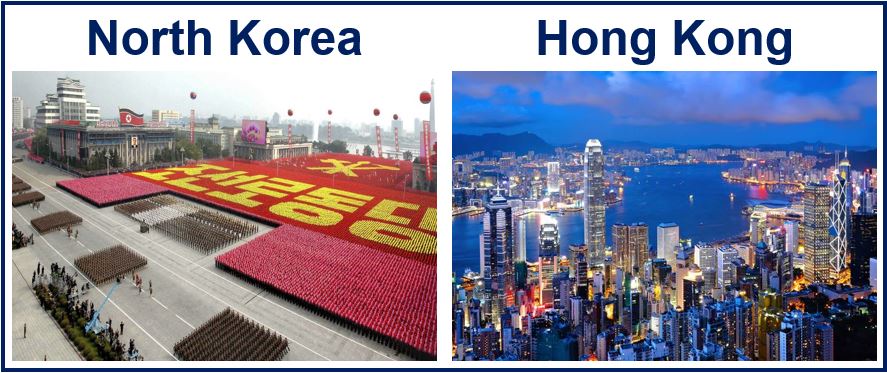A Mixed Economy is both a system of markets and economic planning combined into one. It is an economy that has some central planning as well as private enterprise driving GDP growth, employment, and wealth. It includes elements of both a market and a planned (command) economy.
A mixed economy is one where both the state and the private sector direct the economy – there is a combination of private and public ownership. While much of the country’s markets are free, there is a certain amount of economic intervention.
The majority of mixed economies see themselves as slanting towards capitalism, i.e. they believe they are market economies. However, they have strong regulatory supervision and governmental provision of public goods.
In this balancing act, the mixed economy aims to harness the efficiencies of free markets while countering inequality through selective intervention and support mechanisms.

State run businesses are widespread globally
Several mixed economies have state-run enterprises such as the BBC (British Broadcasting Corporation) in the UK, Fannie Mae and Freddie Mac in the US, ABC (Australian Broadcasting Corporation) in Australia, Aéroports de Paris (52% state owned) in France, Petrobras in Brazil, and and Deutsche Bahn AG (railway company) in Germany.
The nations of North America, Western Europe, Japan and Australasia, i.e. the rich countries, have mixed economies where both private enterprises and government regulations have come to be integral and vital to the economy.
Scandinavia
The Nordic (Scandinavian) nations, which are often described as welfare states, also have mixed economies. Sweden, for example, has tens of thousands of private companies, some of them multinationals such as Volvo, TetraPak, Ericsson and Electrolux. However, Nordic countries have sophisticated and generous welfare systems, which are provided by the state and funded by taxpayers.
Very few command economies today
The former Soviet Union had a command economy – the government controlled all major aspects of the economy and economic production.
Very few countries have command economies today – just Cuba, North Korea and China. China and Cuba are gradually moving towards a mixed economy.
Merriam-Webster defines the term ‘mixed economy’ as follows: “An economy in which both publicly and privately owned enterprises operate simultaneously.”
Nations closest to a free market economy
According to the 2015 Index of Economic Freedom by the Heritage Foundation, the countries closest to a market economy (in order) are: 1. Hong Kong. 2. Singapore. 3. New Zealand. 4. Australia and 5. Switzerland.
The Index places the US and UK in 12th and 13th places respectively. At the bottom of the list are Venezuela (176th), Cuba (177th) and North Korea (178th).
As of recent years, there has been an observable trend where traditional command economies are implementing market-oriented reforms to stimulate economic growth and integrate with the global economy.
These reforms often include the reduction of state-owned enterprises, liberalization of trade policies, and the encouragement of foreign investment to diversify and modernize their economic structures.
Compound nouns
The term “mixed economy” is a compound noun, i.e., a term consisting of two or more words. There are many economy-related compound nouns in the English language. Let’s take a look at some of them, understand their meanings, and see how they can be used in a sentence:
-
Command Economy
A command economy is an economic system where the government makes all decisions about the production and distribution of goods and services.
Example: “In the command economy of the former Soviet Union, the government determined what was produced, how much was produced, and the price at which goods were sold.”
-
Transition Economy
A transition economy is one that is shifting from a centrally planned economy towards a more market-oriented economy.
Example: “After the fall of the Berlin Wall, East Germany underwent a rapid transformation as it shifted from a transition economy to a market economy.”
-
Market Economy
A market economy is a system where economic decisions and pricing are guided by the interactions of citizens and businesses.
Example: “The United States is often cited as an example of a market economy because supply and demand determine the prices and production levels.”
-
Socialist Economy
A socialist economy is one in which the state owns and controls the major means of production, but there may also be a degree of private enterprise.
Example: “In a socialist economy, the government may own key industries, but individuals can still own personal property.”
-
Capitalist Economy
A capitalist economy is characterized by private ownership of assets and business ventures, where the production and distribution of goods are determined by competition in a free market.
Example: “Entrepreneurs in a capitalist economy are free to start businesses and compete for consumers.”
-
Circular Economy
A circular economy is an economic model aimed at minimizing waste and making the most of resources. This model involves reusing, repairing, refurbishing, and recycling existing materials and products.
Example: “Companies that adopt a circular economy approach strive to create sustainable products that can be fully recycled or repurposed at the end of their life cycle.”
-
Green Economy
A green economy is one that aims for sustainable development without degrading the environment. It is structured to reduce environmental risks and ecological scarcities.
Example: “The green economy is gaining traction as businesses focus on renewable energy sources and environmentally friendly practices.”
-
Gig Economy
The gig economy is a labor market characterized by the prevalence of short-term contracts or freelance work as opposed to permanent jobs.
Example: “Rideshare drivers are a common example of workers in the gig economy, where flexible, temporary jobs are the norms.”
Video – What is a Mixed Economy?
This video, from our sister channel on YouTube – Marketing Business Network, explains what a ‘Mixed Economy’ is using simple and easy-to-understand language and examples.

